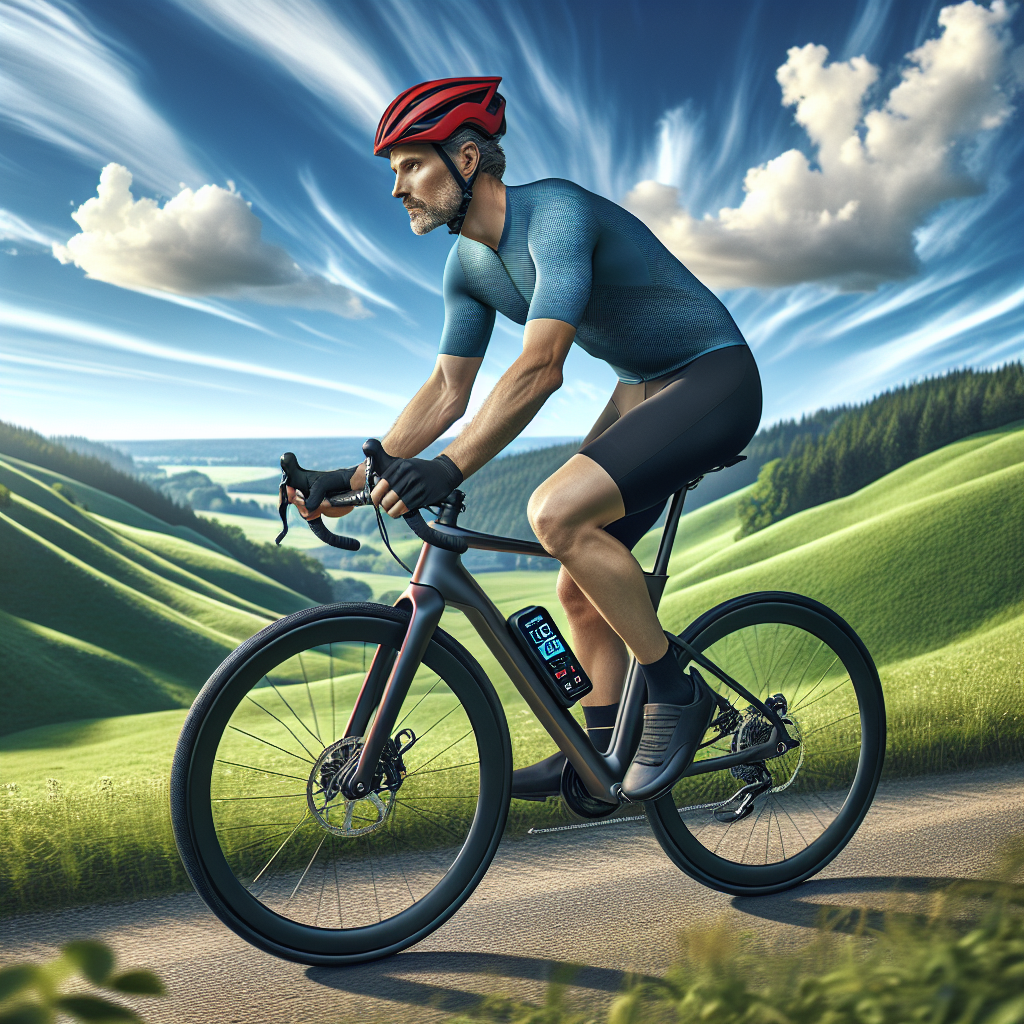In the world of cycling, safety and performance are paramount. A bike TPMS system (Tire Pressure Monitoring System) plays a crucial role in ensuring both. By delivering real-time data on tire pressure, cyclists can make informed decisions that enhance their riding experience.
Understanding the benefits of a bike TPMS system is essential for every cyclist. Here are some compelling reasons to consider:
- Enhanced Safety: Correct tire pressure is vital for safe riding. A bike TPMS alerts riders to any significant drops in pressure, which can lead to blowouts or accidents.
- Improved Performance: Maintaining optimal tire pressure ensures better traction and control, allowing for smoother rides and improved efficiency.
- Cost Savings: Regular monitoring can prevent premature tire wear and costly repairs, saving you money in the long run.
- Convenience: With a TPMS, you no longer need to manually check tire pressure before every ride. The system provides peace of mind, allowing you to focus on the road ahead.
Investing in a bike TPMS system is a smart choice for any cyclist looking to enhance their riding experience. Tow with peace of mind, knowing that trailerwatchdog is standing guard.
Understanding How Bike TPMS Systems Work

A bike TPMS (Tire Pressure Monitoring System) is a sophisticated yet user-friendly technology designed to monitor tire pressure and ensure optimal performance. Understanding how these systems work can empower cyclists to make informed choices about their safety and riding experience.
At the core of a bike TPMS are sensors that are typically mounted inside the tire or on the valve stem. These sensors continuously measure the tire's air pressure and temperature. The collected data is transmitted wirelessly to a display unit, which can be mounted on the bike's handlebars or synced with a smartphone app.
Here's how the bike TPMS operates:
- Real-Time Monitoring: The system provides continuous updates on tire pressure, allowing cyclists to be aware of their tire condition at all times.
- Alerts and Notifications: If the tire pressure drops below a predetermined threshold, the TPMS sends alerts to the rider, enabling timely action to prevent potential issues.
- Temperature Readings: In addition to pressure, many TPMS units also monitor tire temperature, offering insights into tire performance and safety, especially during long rides.
This combination of features not only enhances safety but also improves overall riding efficiency. By understanding how a bike TPMS system works, cyclists can significantly reduce the risks associated with improper tire maintenance.
Importance of Real-Time Tire Pressure Monitoring

Real-time tire pressure monitoring is a critical aspect of maintaining a safe and efficient biking experience. The condition of your bike's tires directly impacts not only your performance but also your safety on the road. Here’s why having a bike TPMS (Tire Pressure Monitoring System) is essential for every cyclist.
First and foremost, proper tire pressure ensures optimal traction and control. Low tire pressure can lead to decreased grip on the road, increasing the risk of skidding or losing control, particularly during sharp turns or on uneven surfaces. Conversely, overinflated tires can result in a harsher ride and more susceptibility to punctures.
Moreover, real-time monitoring allows for immediate awareness of tire conditions, which can prevent catastrophic failures. By receiving alerts about pressure drops or temperature spikes, cyclists can take action before a tire blowout occurs, significantly reducing the likelihood of accidents.
Additionally, maintaining the correct tire pressure enhances fuel efficiency, which, in the context of biking, translates to less effort required in pedaling. This can be especially beneficial during long rides or competitive events, where every bit of energy counts.
Lastly, tire health is directly linked to the longevity of the tires themselves. Consistently monitoring tire pressure can extend the life of your bike tires, ultimately saving you money on replacements.
Enhancing Safety with Bike TPMS Technology

Safety is paramount for any cyclist, and integrating a bike TPMS (Tire Pressure Monitoring System) into your riding routine is an effective way to enhance that safety. This advanced technology provides cyclists with real-time data that can dramatically reduce the risk of accidents caused by tire issues.
One of the most significant advantages of a bike TPMS is its ability to monitor tire pressure continuously. During rides, cyclists can receive instant notifications about tire pressure fluctuations, allowing them to address potential issues before they escalate. This proactive approach minimizes the chances of unexpected tire blowouts, which can lead to serious accidents.
Moreover, many modern TPMS units also monitor tire temperature. Tires that run too hot can be a red flag for impending failure. By keeping an eye on temperature levels, users can identify problems early, such as over-inflation or excessive friction, ensuring they maintain safe operating conditions.
Additionally, a bike TPMS can also contribute to better visibility on the road. Some systems come equipped with bright, easy-to-read displays or smartphone connectivity, keeping cyclists informed at a glance. This means riders can stay focused on the road ahead rather than worrying about their tire conditions.
Furthermore, enhanced safety extends beyond individual cyclists. As more riders adopt bike TPMS technology, it fosters a culture of safety within the cycling community, encouraging others to prioritize their tire health and overall bike maintenance. This collective awareness can lead to safer roads for everyone.
Choosing the Right Bike TPMS System for Your Needs
When it comes to selecting the ideal bike TPMS system for your cycling needs, there are several factors to consider that can greatly influence your riding experience. With various models available on the market, understanding your specific requirements will help you make a well-informed choice.
First and foremost, assess the compatibility of the TPMS with your bike type. Some systems are designed specifically for road bikes, while others may cater to mountain bikes or hybrids. Ensure that the chosen system is compatible with your bike's wheel size and valve type.
Next, think about the monitoring capabilities you desire. Many TPMS systems offer real-time pressure and temperature readings, but some may also provide advanced features such as historical data tracking, alerts for low pressure, or even integration with mobile apps. Determine which features are essential for your cycling habits.
Another critical aspect is the installation process. Some bike TPMS systems come with easy-to-install sensors that can be mounted without professional help, while others may require more complex setups. Choose a system that aligns with your comfort level regarding installation.
Battery life is also a vital consideration; look for systems that offer long-lasting battery performance to minimize the need for frequent replacements. Additionally, consider whether the system features a rechargeable option or uses standard batteries.
Lastly, read customer reviews and compare prices. This will give you insights into the reliability and performance of various models. Taking the time to research and evaluate your options will ensure you choose a bike TPMS system that enhances your ride while providing peace of mind.
Conclusion: Upgrade Your Ride with a TPMS

Upgrading your ride with a bike TPMS system is no longer just a luxury; it's a necessity for modern cyclists who prioritize safety and performance. By implementing a TPMS, you gain access to real-time tire pressure monitoring, which can significantly reduce the risk of accidents caused by under-inflated or over-inflated tires. This small investment can lead to a more efficient and enjoyable cycling experience, allowing you to focus on the road ahead.
Moreover, the integration of advanced technology in bike TPMS systems offers features such as temperature monitoring, alerts for pressure changes, and data logging, all of which contribute to better maintenance of your bike. With a smart monitoring system in place, you'll not only enhance your safety but also prolong the lifespan of your tires, which can save you money in the long run.
As you consider upgrading your cycling gear, remember that having the right tools can make all the difference. A bike TPMS system is an essential component that can elevate your riding experience to new heights.
So why wait? Tow with peace of mind, knowing that trailerwatchdog is standing guard. Visit trailerwatchdog.com today to explore our innovative trailer monitoring solutions and ensure your rides are safe and enjoyable!








